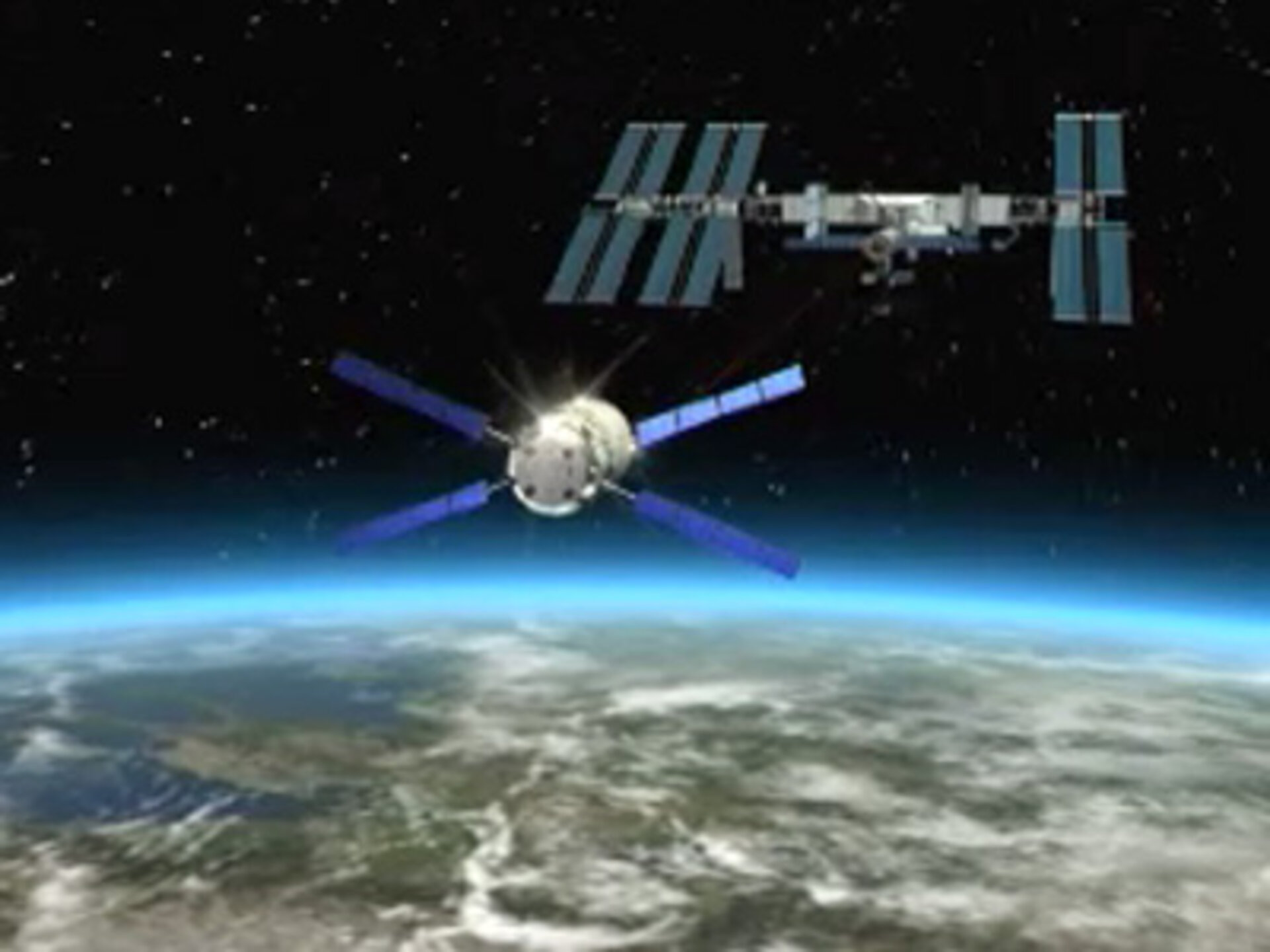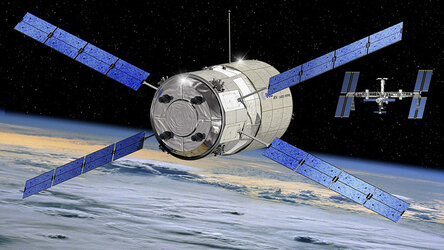ATV: Rendezvous in space
Europe's Automated Transfer Vehicle introduces a new generation of spacecraft, capable of entirely automatic rendezvous and docking, as opposed to Progress or Soyuz where the vehicle needs cooperation of the Station.
From 1998, the International Space Station has required regular visits - to date 58 dockings - of the Shuttles, Soyuz crew, and Progress supply ships. Unmanned - but man-rated – ESA's Automated Transfer Vehicle (ATV) has the unique capability to perform automatic rendezvous in a fully autonomous manner.
The rendezvous of ESA's Jules Verne ATV with the ISS uses GPS navigation, star tracker devices, two critical sensors, a telegoniometer and a videometer. After raising its orbit to some 400 kilometres, the ATV will come in sight of the ISS, and from about 30 kilometres distance behind, and 5 kilometres below, it will close in on its target.
For any emergency occurring during spacecraft navigation, flight controllers can at anytime call on the ATV independent system and back away from the Space Station. Astronauts on the ISS can also reject the spacecraft in case of anomalies. Their task onboard is ensuring ATV either touches at the right place at the right speed, or doesn’t touch at all.
With its unprecedented cargo and re-boost capabilities, ATV will service the Space Station for many years and could become a unique asset after the Shuttle retirement in 2010. Its advanced technologies will no doubt have other uses: for robots to recover old satellites and space debris, to return planetary samples back to Earth, for the remote construction of large space structures, and notably for interplanetary journeys.






